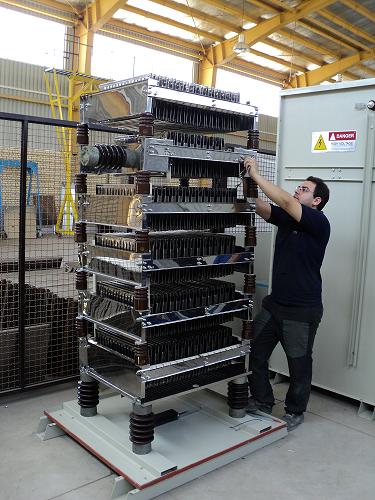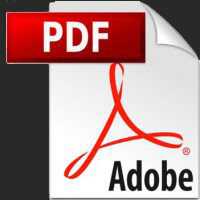
Selection of the type and material of the element for industrial resistors depends on various electrical and mechanical parameters such as rated current, rated resistance, rated time, maximum permissible temperature of the element, the amount of vibrations in the system, environmental conditions, and etc.
Depending on specifications of the equipment and place of utilization, various types of insulators such as mica and ceramics are used in the structure of the elements. Important parameters in the selection of proper insulator are thermal shock, water absorption, insulation endurance, vibration tolerance and mechanical stress.
PAARSUN Co. produces elements made of Stainless Steel, Fe-Cr-Al and Ni-Cr with different structures as follows:
Grid Type Element
One of the most common types of elements in the structure of industrial resistors is the Grid Type, which consists of cut steel sheets. In PAARSUN Co., this structure can be produced in different materials, sizes and shapes, with screw or welded connections, and in three groups: Punch, Stamp, and Strip. Most industrial resistors are of the Punch type, which are mainly used in non-vibration devices; however, by changing the mechanical structure, it can be made more resistant to vibration.

Wire Wound Element
This structure is the most common type of wired elements, which consists of spiral wire strings and is restrained on grooved ceramics. In High Resistance (HR) and low current resistors, utilization of this type of element, due to the possibility of selecting smaller cross-sections, will lead to optimal design and accordingly, reduction of the dimensions. These types of elements can also be used in parallel for high currents.
Generally, the main advantages of the Wire Wound type are as follows:
- Lightness of the element
- High tolerability to mechanical vibrations
- High heat dissipation
- Rapid cooling (and thus readiness for reuse)
- Uniform cross-section of the current-carrying element
- Ease of implementation of resistance taps
- Ease of repair due to the capability of replacing the elements
This structure with different materials, dimensions and designs can be produced in two main groups: Simple-Coil and Coiled-Coil in PAARSUN Co.

Edge Wound Element
This type of element is obtained by spiraling the metal strip on the edge and securing it with grooved ceramic. This structure can be produced in PAARSUN Co. with different materials and dimensions in two main groups, Round and Oval.
The main advantages of this structure are the following:
- High tolerability to mechanical vibrations due to the restraint of each strings
- Ability to use in high currents due to the capability of selecting a larger cross section
- Proper heat dissipation due to the distance of the strips from each other
- Reduction of the equipment’s dimensions compared to other structures (for high and continuous currents)
- Ease of repair due to the possibility of replacing the elements
- Ease of implementation of resistance steps

Ribbon Type Element
The Ribbon Type element is made of a long strip with successive bends that is secured with grooved ceramics at the edge or bush-shaped ceramics in the middle of the element. The advantages of this structure are:
- Proper heat dissipation due to the large contact surface and the appropriate distance of the strips from each other
- Use of minimum welding due to the unity of the resistor and reduction of unavoidable welding defects
- Applicable in high-current systems
- Applicable in systems with continual vibrations


